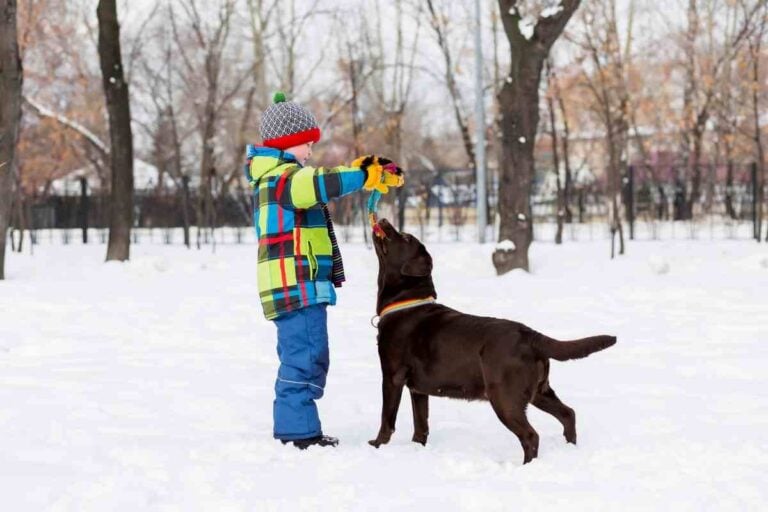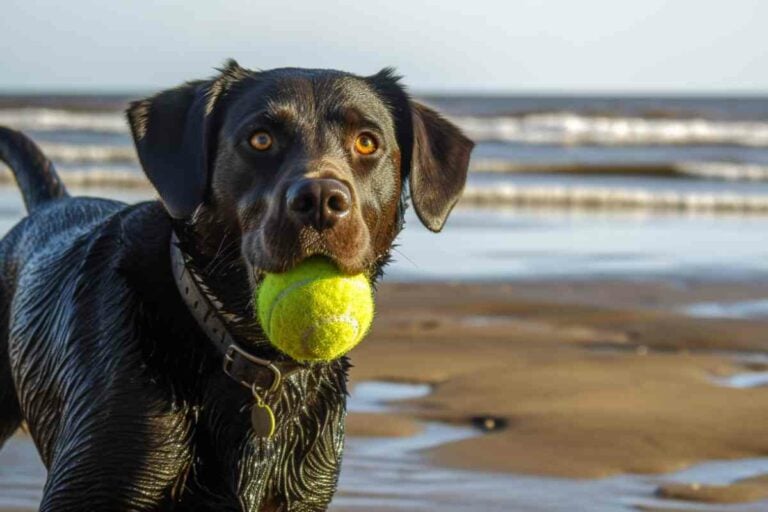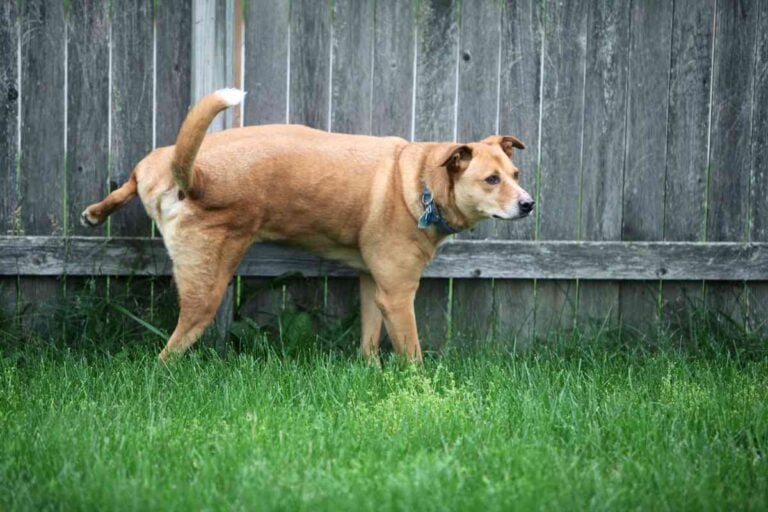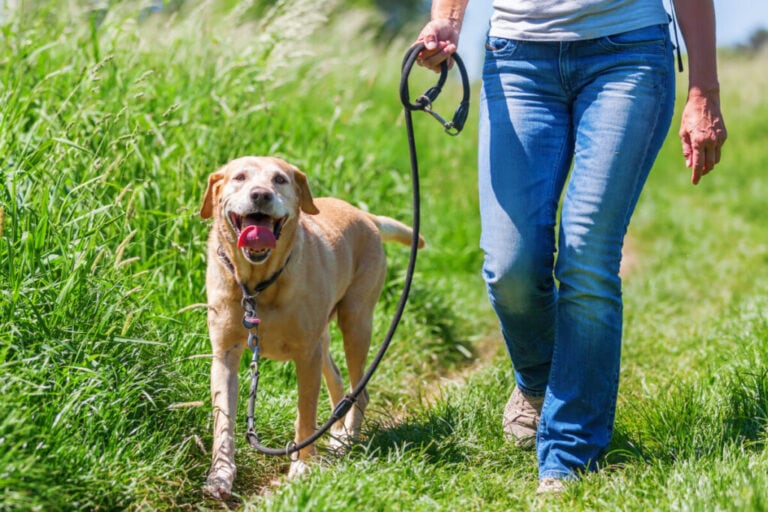Do Labrador Puppies Change Color?
If you’ve made the responsible decision to take your time and shop around with reputable breeders to find just the right Labrador puppy, you may be wondering if you can expect that wiggly little pup to change colors.
After all, if your cream-colored Labrador puppy may turn brown at six months, why bother considering their puppy color at all? Or is there a way to predict what color your adult Labrador will be when they are puppies?
Do Labrador Puppies Change Color?
Labrador puppies do not change colors and typically stay the same color throughout their lives. Some puppies will occasionally darken slightly as they reach adulthood but this change is usually extremely subtle if it occurs at all. Senior Labradors may become grey or white as they age, too.
When they are much older, their fur coat will usually lighten slightly but still maintain the same fur color they had as a puppy.
This change of color happens as they get older and doesn’t happen when they are young. The color you see is what you usually get.
This color change happens in late adulthood because their guard hairs are growing in, and this fading or lightening is a natural occurrence with age.
You will also see a lightening of their nose and other areas, and you might see some white whiskers around their muzzle area.
There are a few instances where some Labradors will change and get a bit darker with age, but this doesn’t happen when they are puppies.
There are other instances where an older dog will completely lose their coloring and become white, but this is rare and is called vitiligo and happens when a Labrador ages and loses its pigment.
A Labrador puppy will lose its soft puppy fur and gain its adult fur. Still, the coloring will remain the same unless the Labrador is from an inferior breeder who used unethical breeding practices.
A common occurrence with Labrador puppies or litters of puppies from the same mother and father is to be a different color from their dog parents.
Why does my Labrador puppy look different from her mother and father?
Your Labrador puppy looks a different color than their mother and father because of genetics.
For the Labrador Retriever, there are three distinct colors, black, yellow, and brown also known as chocolate or liver.
These colors are based on breeding from previous generations of both the mother and father dog parent.
When it comes to breeding dogs, particularly Labrador Retrievers, knowledge, information, and education are very important to create standard breed puppies that look like the breed standard, as well as being healthy.
When certain colors of Labradors are mixed or certain Labradors with particular DNA are mixed, whether, from a skilled and knowledgeable breeder or inferior breeder, you can get other colors like red.
The above colors are recognized by the American Kennel Club and other organizations as the breed standard for the Labrador Retriever, but depending on breeding, any number of colors can be seen, including silver which comes from mixing a brown Labrador Retriever with a yellow Labrador Retriever.
Depending on the coloring of the mother and father Labrador Retriever as well as their DNA, and the previous generations, you can get any number of colors and even variations of dogs in one litter depending on how dominant or recessive that gene is in that line.
In certain instances, depending on the genetics of the mother and father, both parent Labradors could be black but still produce brown puppies if they carry that gene in their DNA. There can be any number of variations in the same litter of puppies.
A black Labrador retriever pair could also produce three black puppies and one brown, and so forth.
There have even been some exciting but rare occurrences where a mating couple of black Labradors produce an entire litter of mixed colors, brown, black and yellow.
Skilled breeders have the knowledge and capability to produce puppies like this safely, and it can be a new and exciting experience for them and for potential pet parents who select these puppies.
Trained and skilled breeders devote their energy and time to understanding the genetics of their mating pair. They know which ancestral line is best paired with another and devote their energy not only to creating litters of puppies but ensuring that those puppies are healthy and have the best behavior.
This is one reason why selecting a reputable and quality breeder is so important: good quality breeding will show up in the coloring of your Labrador puppy but also later in life in their behavior and health and even how long the dog might live.
Why Is My Older Labrador Retriever Turning White?
The guard hairs in older Labrador Retrievers that begin to lighten are the top hairs or outer fur of a dog’s fur coat. These hairs or fur are a bit longer and stiff or rough and protrude through the soft underfur.
The guard hairs or outer coat are thought of as added protection for the dog’s body against weather and outdoor elements that can affect the health and wellness of the Labrador and its fur, skin, and body.
Not all dogs have two layers of fur, but the Labrador Retriever is one of them. Dogs that have two layers were bred for the outdoors, work, sport, and the harsher elements of outdoor weather.
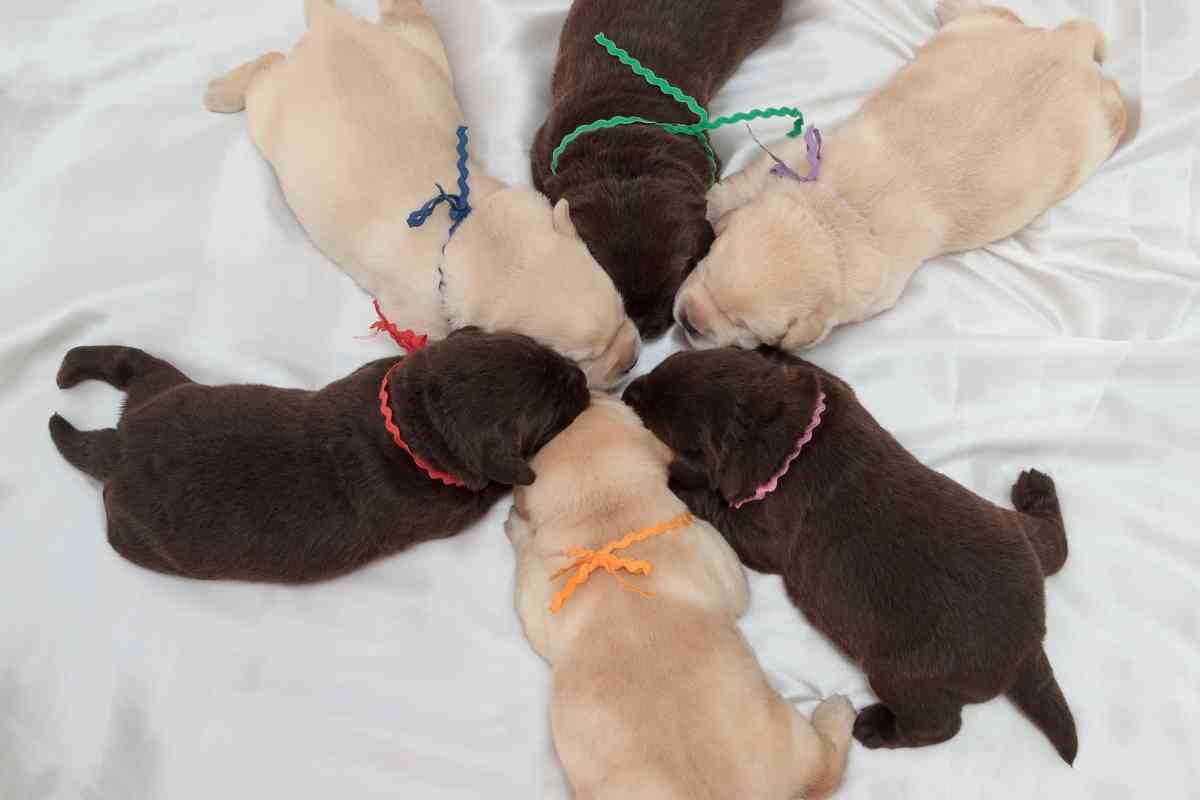
Do Labrador puppies’ eyes change colors?
Yes, a Labrador puppy’s eyes change colors. It takes from birth until they are about four months old. This is a natural occurrence that happens to all dogs because they lack melanin, which is pigment in their body when they are born.
As they grow, their bodies develop the melanin pigment, which will give them their eye color.
Puppies that are darker, meaning black or brown Labrador puppies, will have more melanin in their bodies and usually end up with brown or dark eyes.
Labrador puppies that are light or yellow will have less melanin pigment in their bodies and end up with lighter eyes like amber.
In some rare instances, some puppies will end up keeping their blue eyes from birth or having a blueish-green variation, this is a rare occurrence, but it does happen.
Final Thoughts
Labrador Retriever puppies no not change their color as they grow, but their coloring might be completely different from their dog parents and the other dogs in a litter.
Regardless of this color variation, their coloring will remain true throughout their lives until they get much older.
At this point, their fur most often lightens with age, but it can also darken a little. Either way, this change is a normal process of age and nothing to be alarmed about. These color variations, and changes are a natural part of a Labradors life!


